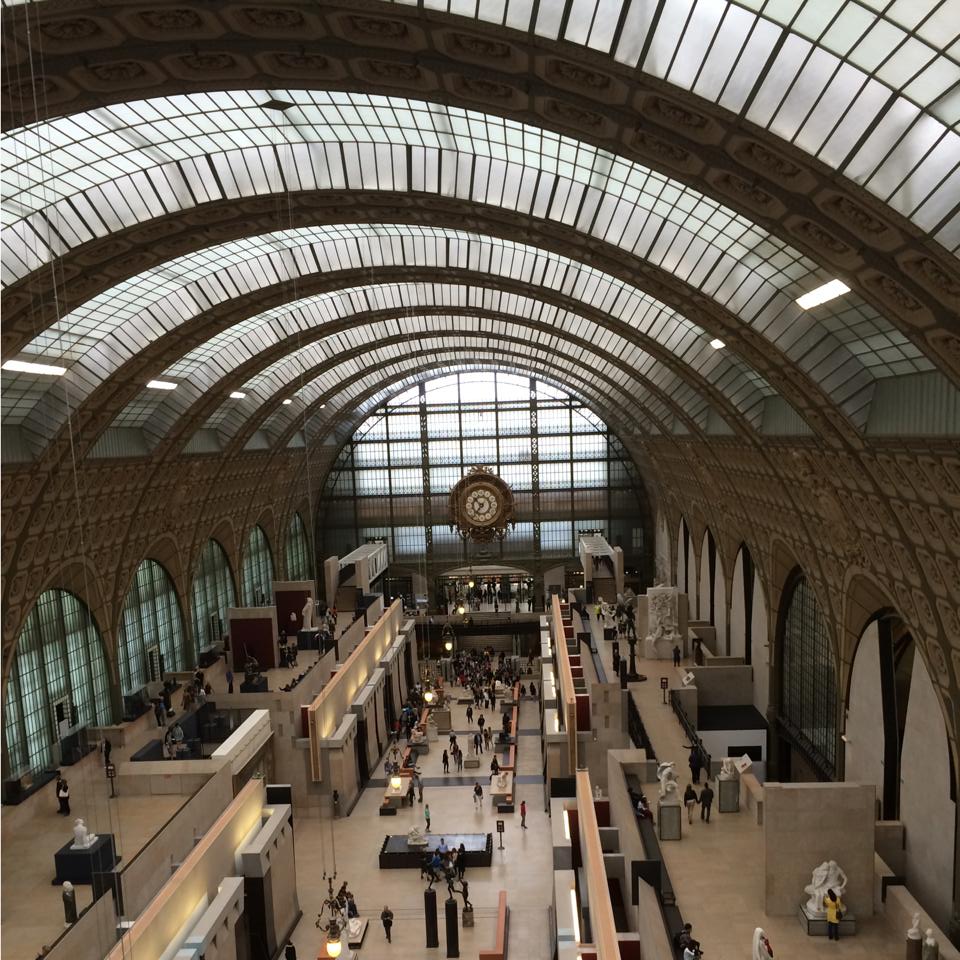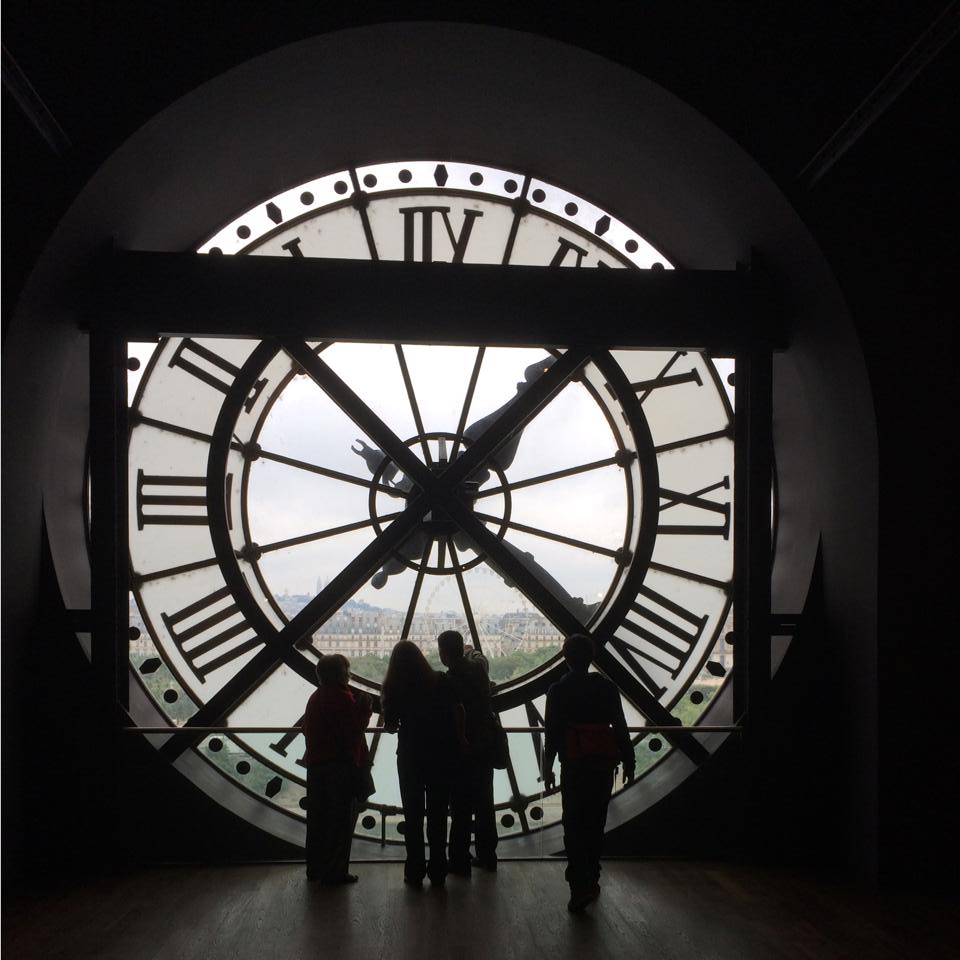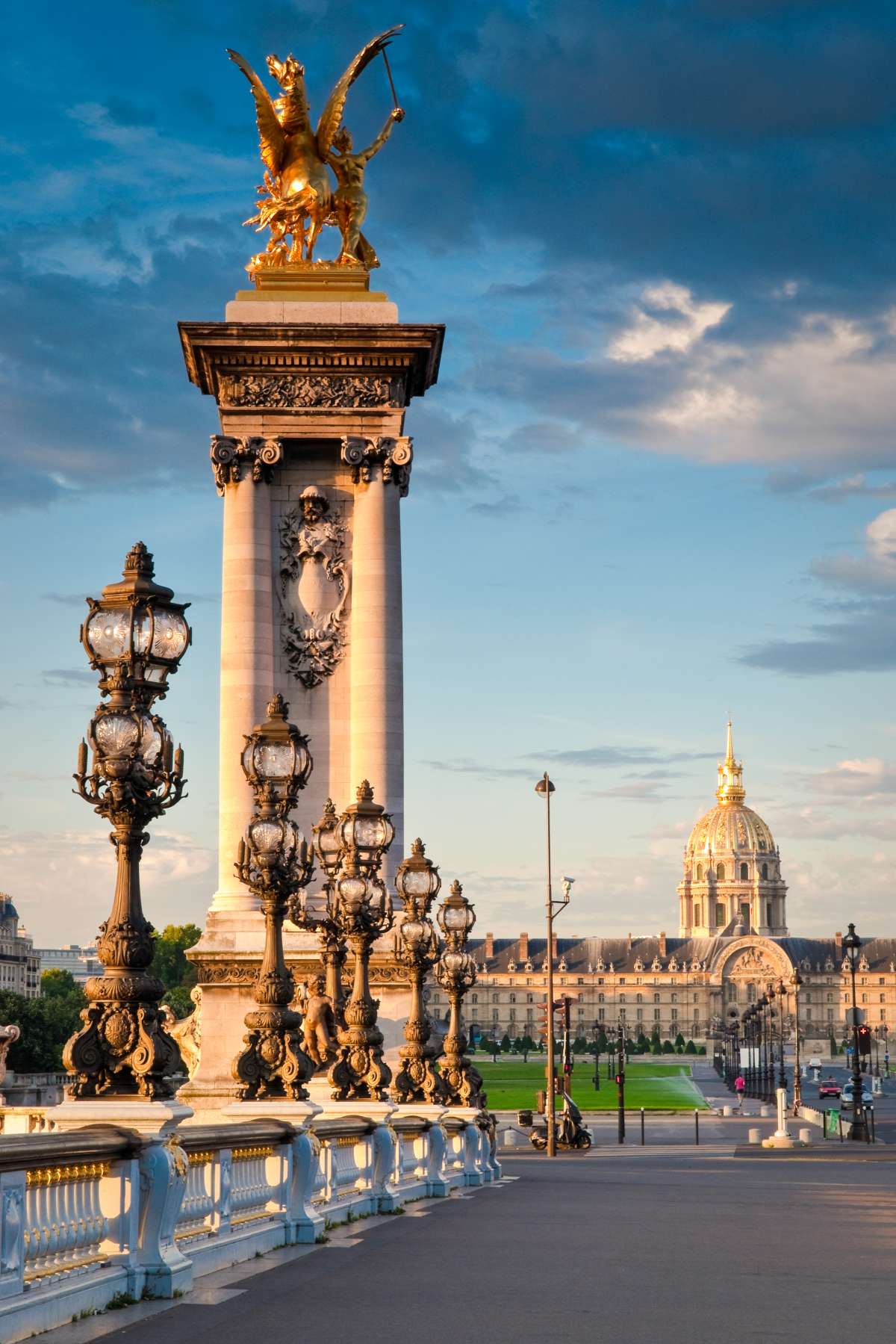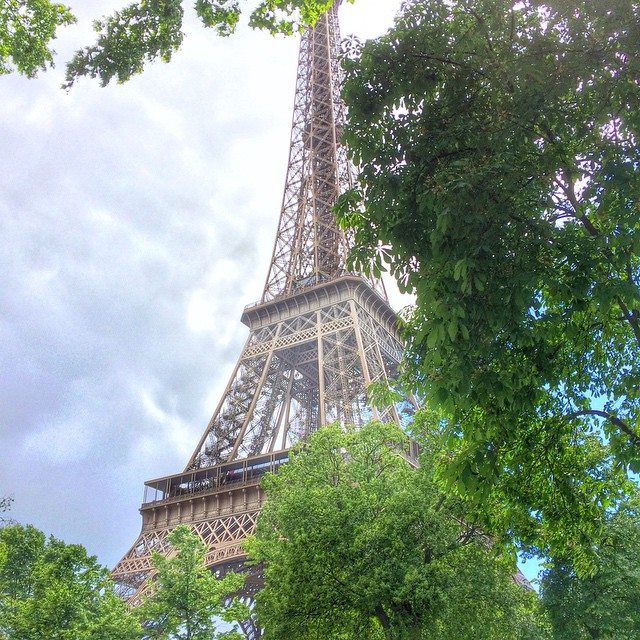It was a warm and balmy summer evening and I had walked the length of the Champs Elysees to its western end to cross the busy Place Etoile roundabout. My mission was to reach the Arc de Triomphe and to climb the 284 steps to the 50m high viewing platform.
It was worth the effort as from there I could see vast stretches of Paris taking in Sacre Coeur and La Defense but especially because I was about to see Paris’ most famous light show that takes place after dark. As night fell, I watched as the Eiffel Tower light up (as it does every night) looking much like a twinkling star for the duration of a 5 minute laser light show that takes place on the hour. It was a lovely moment.
The Arc is a fine monument and the most iconic in Paris yet it is just one of over 300 others that are worthy of a visit, including Notre Dame, the Orsay Museum, the Invalides and the Louvre.
I didn’t have much time to plan a route so I chose to download the Paris Monument Tracker app (read my review here) and opted for the Paris along the Seine self-guided tour to pack in as much as I could in one day.
![]()
I started my journey at one of the 37 bridges crossing the Seine in Paris, Pont Neuf, where the app invited me to admire the equestrian statue of Henri IV, which was built by Louis XIII in 1818. The app explained that though called Pont Neuf (New Bridge) this is the oldest bridge in Paris.
The following bridge, Passerelle des Arts which connects the Louvre and the Institute of France was, until recently, the place where lovers would attach their lovelocks to its railings as if to seal their love forever. These were permanently removed in June 2015. Monument Tracker explains the origins of the name:
Bridge linking the Louvre and the Institut, the Passerelle des Arts, reserved for pedestrians, built between 1801 and 1804 and owes its name to the fact that the Louvre has been called Palais des Arts at the time of its construction. [download the app for more]

Pont des Arts with its lovelocks and the Louvre in the background (c) wikimedia/Inocybe/Piero d’Houin
Next to the bridge is the Institut de France, built by French architect Louis Le Vau who also built Versailles Palace. The Institut houses five academies, the most famous being the Académie française. The app explains:
Built by Louis Le Vau at the death of the Cardinal Mazarin in 1661 who wanted to make of it the “Collège des Quatre Nations” (the four provinces attached to his royal obedience under his ministry), the “Institut de France” is famous for its dome which cover the room that host the “Académie française” (French academy). [download the app for more]

Orly Museum, Paris (c) Martino Matijevic
From the Institute, next stop was the Orsay Museum, a former train station (Gare d’Orsay). It opened as a museum in 1986. Today, it includes works by Ingres, Chaussat, Degas, Monet, Renoir, Pissaro, Manet, Rodin and Maillol. The entry fee is only €11.
Tip: make sure you walk up to the top floor to see the view of the Seine through the large clock and take a photo in front of it (this is probably the only place in Orsay where it is allowed to take photos).

Orly Museum, Paris – the clock (c) Martino Matijevic
Ten minutes away is the majestic Pont Alexandre III bridge gifted to France by the Tsar Alexandre III.
On each side of the bridge, 2 pillars atop which can be seen a statue of Pegasus, the winged horse, representing peace for the Rive Droite (right part of Paris, eg. Champs Elysées) and war for the Rive Gauche (left part of Paris eg. Saint Germain). [download the app for more]

Pont Alexandre III with Les Invalides in the background (c) Monument Tracker
The next bridge on the Paris along the Seine tour was the Alma Bridge, named after the Battle of Alma during the Crimean War, in which the French and the British claimed victory over the Russian army in 1854, and inaugurated by Napoleon III in 1856. Monument Tracker explains the interesting fact behind the statue of the Zouave (North African infantry soldier):
The foot of the statue is used as an alert in the case of a rise of the Seine. The statue was submerged up to the shoulders at the time of the centenarian flood of 1910. [download the app for more]

Flame of Liberty, Alma Bridge, Paris (c) wikimedia/Mbzt
While admiring the bridge, I was alerted by the app that I was next to the Flame of Liberty, a full-size replica of the torch carried by the Statue of Liberty in New York. Most people (including me) think that the torch was installed in honour of Diana, Princess of Wales, who died in 1997 in a car crash in the tunnel beneath the Alma Bridge. However, thanks to Monument Tracker I have learned that the monument actually dates back to 1989, when the International Herald Tribune offered it to the city of Paris to commemorate 100 years since the newspaper started publishing in Paris.
The itinerary next took me to Musée du quai Branly, the newest major museum in Paris, having opened to the public in 2006.
The ‘Musée du Quai Branly’ is a remarkable place of dialogue between cultures. [It] dedicates more than 39,000 m² to the art of Africa’s, Asia’s, Oceania’s and America’s civilizations as well as to the ethnological laboratory of the ‘Museum of Mankind’ in a very lively, playful and sensory way. [download the app for more]

Eiffel Tower (c) Martino Matijevic
Having reached the Eiffel Tower, I was able to see it close up during daylight hours. I stood underneath this iron giant, trying to imagine what impact it would have had in 1889 when, with its 324 meters, it was the tallest building in Paris and, for several decades, the tallest building in the world. I sat on a bench in the nearby park, away from 100s of tourists queuing to see the 360° view of Paris, and listened to the fascinating facts narrated by the app:
324m of height, it is an iron architectural mastery which requested 300 acrobat workers during 2 years to put together 18,000 iron pieces and 2,5 millions rivets! The roof structure weight about 10,000 metric tons (about 2046226 lb). Every 7 years it is re-painted and the operation necessitate 50 metric tons of paint. 20,000 light bulbs are needed to enlighten it. [download the app for more]
Tip: While the view from the Eiffel Tower is amazing, there is one thing missing from the panorama: the Eiffel Tower itself. Instead, head over to Tour Montparnasse. Tickets cost €15 per person and from the viewpoint at 210 meters you get to see Paris with the Eiffel Tower as a bonus. (source: Travel Guide: 48 hours in Paris)
Read my review of Monument Tracker destination discovery app:
Disclaimer: We were recompensed for our time in testing Paris Monument Tracker.

